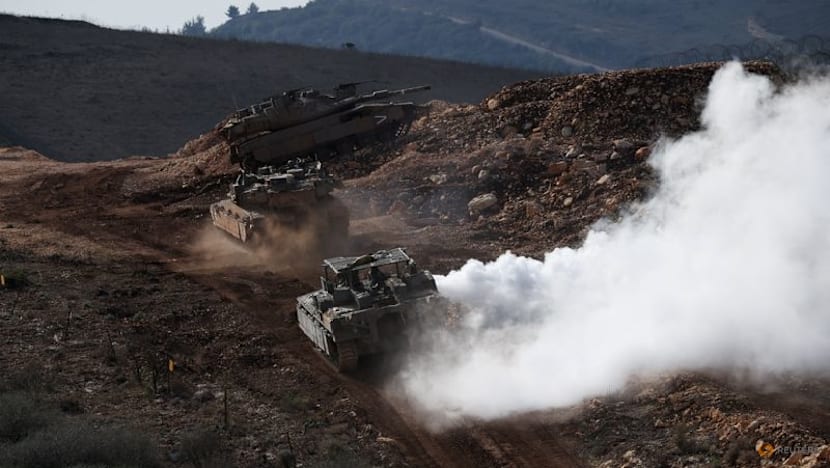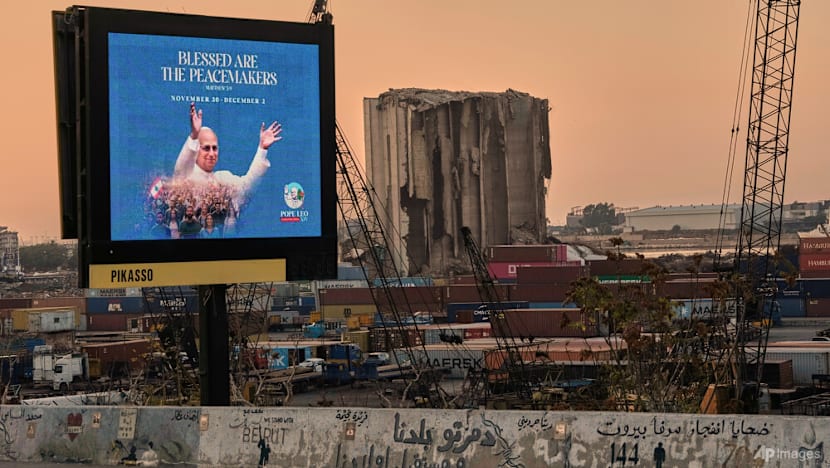One year after Israel-Hezbollah ceasefire, fears rise of a return to war
The Israeli military has been carrying out near-daily airstrikes in southern Lebanon, accusing Hezbollah of trying to rearm and rebuild their capabilities in violation of the agreement.


This audio is generated by an AI tool.
KIRYAT SHMONA, Israel: When Aviva Weitzman walks through her home in Israel’s northernmost city, she still pauses at the scars on the walls – reminders of the missiles that forced her family to flee last year.
They returned to Kiryat Shmona earlier this year, hoping the ceasefire between Israel and Lebanese militant group Hezbollah that was struck a year ago on Nov 27, 2024 would hold.
The truce was meant to end more than 13 months of cross-border violence and an Israeli ground invasion that killed more than 4,000 Lebanese and 127 Israelis.
But with Israeli airstrikes continuing and both sides accusing each other of violating the agreement, fears are building of a return to full-scale war.
“Now, the feeling is that there is no security, that there could be another round of war, that Hezbollah is indeed trying to get closer to the fence, trying … maybe to do something,” Weitzman said.
“It’s part of why the area hasn’t fully recovered.”
About 70,000 people were evacuated from communities across northern Israel when Hezbollah began firing missiles, rockets and drones in support of its Palestinian ally Hamas, a day after the Oct 7, 2023 attacks.
More than three-quarters of the population of Kiryat Shmona – which was home to about 24,000 Israelis in 2023 – fled the city. Many have since returned.
NEAR-DAILY AIRSTRIKES IN SOUTHERN LEBANON
The ceasefire has made things safer on the Israeli side of the border, and Hezbollah has not fired into Israel since the truce began.
However, things are different on the Lebanese side.
The Israeli military has been carrying out near-daily airstrikes in southern Lebanon, accusing Hezbollah of trying to rearm and rebuild their capabilities in violation of the agreement.
Some of those airstrikes have reached Lebanon’s capital Beirut.
On Sunday (Nov 23), a rare strike in Beirut's southern suburbs killed a top Hezbollah leader and several other members.
It came just four days before the one-year anniversary of the ceasefire agreement, and a week before Pope Leo XIV arrives in Lebanon on his first overseas trip.

The Israeli military says it has killed over 300 Hezbollah members since the ceasefire came into effect, while the United Nations said more than 100 Lebanese civilians have also been killed.
The intensifying attacks are raising fears that the situation could deteriorate further.
“Sometimes, they are targeted strikes aimed at Hezbollah leaders or operatives. But we have also had a series of incidents in which Lebanese civilians were targeted by the Israelis, and this is creating a climate of panic in Lebanon,” said Karim Emile Bitar, a Middle East Studies lecturer at Sciences Po Paris university.
“Many Lebanese are worried that we could soon witness a new full-fledged war between Israel and Hezbollah,” he added.
ACCUSATIONS OF DRAGGING FEET
According to the ceasefire agreement, which was brokered by the United States and France, the Lebanese military is meant to disarm Hezbollah.
The government has called for patience, saying it is working to confiscate Hezbollah’s weapons in southern Lebanon by the end of the year.
But last month, Israel's Defence Minister Israel Katz accused Lebanon's President Joseph Aoun of “dragging his feet” on the matter.
Sarit Zehavi, a retired lieutenant-colonel in the Israeli military, said she believes the Lebanese military is not doing everything it can to disarm Hezbollah.
“It is clear that it's far from enough, that there are a lot of violations - of warehouses, of weapons, storage of weapons that are inside civilian infrastructure in South Lebanon,” added Zehavi, who founded think tank Alma Research and Education Center, which focuses on security on Israel’s northern border.
“To truly disarm Hezbollah, the Lebanese army (must really) want that. (It) really needs the capabilities (and) the willingness to clash with Hezbollah, because Hezbollah will not do that in a non-violent way.”

Many are also starting to worry that direct conflict with Hezbollah could plunge Lebanon back into civil war, said Bitar from Sciences Po Paris.
“I think, however, that the Lebanese president and the Lebanese prime minister are aware that they simply cannot order the Lebanese army to enter into a confrontation with Hezbollah, even if there are intense American and Israeli pressures,” he noted.
Hezbollah has accused Israel of violating the ceasefire by remaining inside Lebanese territory at five locations along the border.
The group said they will not disarm as long as Israeli strikes continue. But with Israeli officials vowing to keep up those attacks, both sides appear intent on continuing along a collision course.
Some Lebanese civilians told CNA that Israel’s continued bombardment has only strengthened their resolve.
"Now they think that with their method, this barbaric and brutal approach, they will break our will,” said shop owner Mohammed Bazzi.
“What's happening to us only increases our will and determination.”
















